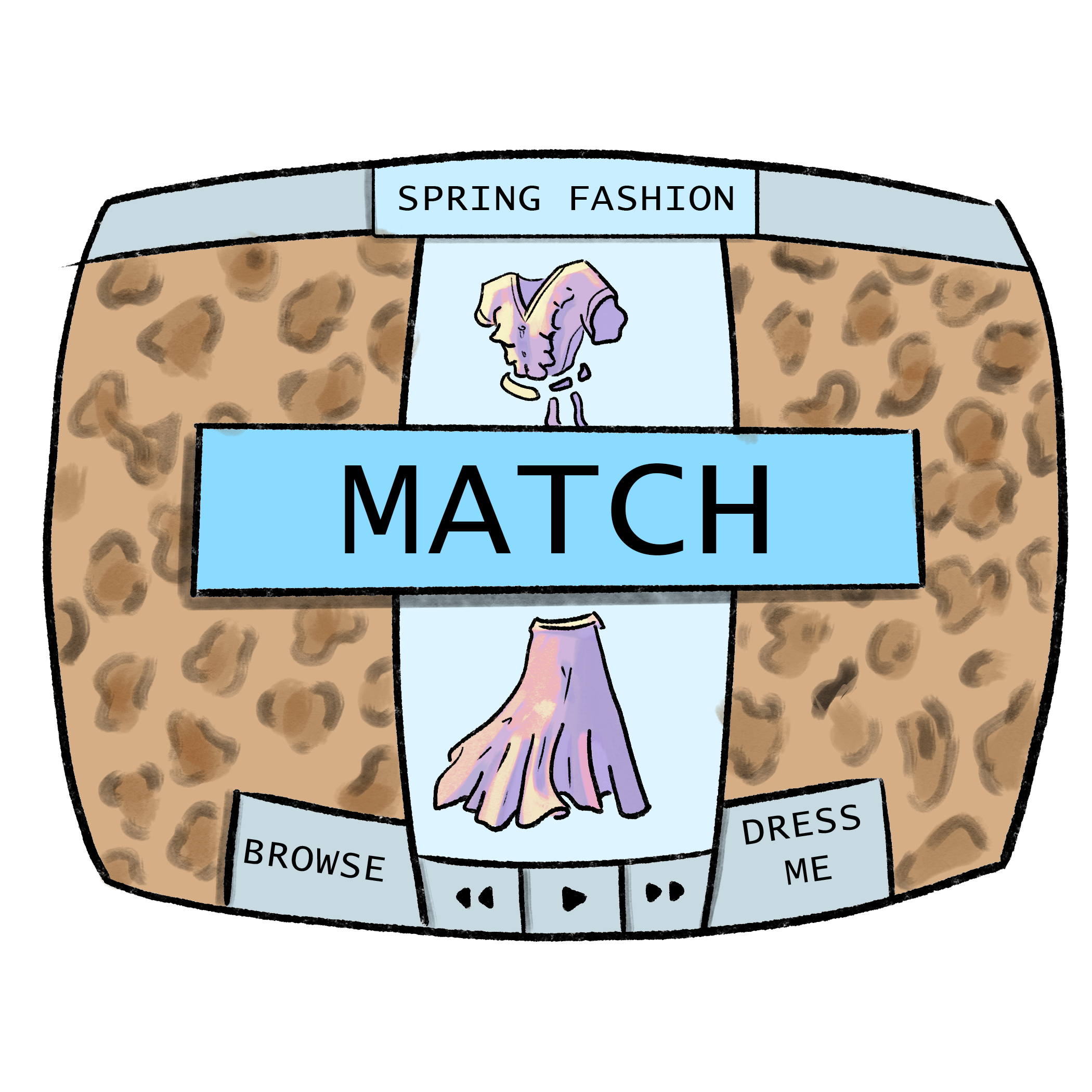What are the clothes we wear saying about us? And what do trends have to do with it?
Slow-fashion, fast-fashion, sustainable fashion, timeless fashion, upcycle, resell, in-season, out-of-season — an endless supply of words to give meaning to the clothes we choose to wear.
At first glance, they seem to be buzzwords, ultimately deeming some clothes “good,” and some clothes “bad.” But more than buzzwords, these terms provide a direct correlation between our clothes and the world around us.
Most of us have now experienced our first large trend cycle, with the return of Y2K fashion. But we are also experiencing trend cycles on a ridiculously smaller scale, one with a timespan of two months, instead of 20 years. Trends cycle so fast it actually induces my anxiety.
I went into H&M on Saint-Catherine St. for the first time in years last week, and felt completely overwhelmed. The fluorescent lights highlighting this season’s neon psychedelic trends, the seemingly infinite amount of clothes, the intensity of shoppers searching for something that will undoubtedly be out of style before they even return home. Not to mention the EDM blaring over the sound systems making me feel even more off-kilter, which only aggravated the situation. I couldn’t help but question, when we buy clothes, what are we buying?
As consumers, we must acknowledge the relation between clothes and the world around us — they don’t just represent your stature. We must understand the direct effect of the fashion industry and fast-fashion on the environment, on its involvement of child labour, and on the society in which we participate.
Once we understand the factors that go into our clothes, it’s important to buy and wear them in a way that is responsible and adheres to our beliefs and morals about the world.
As someone who has loved clothes and fashion from a young age, I have always considered my clothes as a representation of myself. My style fluctuates, which presents to the world my personal growth and changing environments. Moving to Montreal from Halifax influenced my style the most in recent years, with my wardrobe becoming more of a collection built from various trips to the thrift store and less from stops at my local Lululemon. It reflected the culture of Montreal youth and my personal endeavors, mainly that of caring for the environment.
That’s the thing with clothes. They tell others something about you which often remains unsaid. It is a signifier to the world; this is who I am because this is what I wear. But if what we are buying is an extension of ourselves, what do trends have to do with it?
In this case, maybe trends are a signifier to the world simply that we know what is trending. For lack of better terms, wearing a trend makes us cool. It’s not an inherently bad thing. Trends have been around as long as fashion itself has, and it’s not wrong to want to participate in them.
But many of us fall into the trend trap, in which we buy something only to wear it once or twice and never reach for it again. We all remember those early pandemic era trends of 2020 — namely cow and zebra print on literally everything, whether it be pants, tops, hats, shoes or furry bags. I couldn’t scroll through Pinterest without seeing some rendition of the alternative animal print trend, and now you’d be hard-pressed to find them anywhere.
Trend anxiety doesn’t just manifest itself in the chaos of fast-fashion shopping, as it also implores us to keep buying new clothes in order to retain the perception of being “trendy.” In today’s social media-driven world, trends have made fashion more about others than about ourselves.
Maybe you feel really comfortable in a certain trend, and you know you can source it in a sustainable way. You’ve already done the hard part by acknowledging how your clothes make you feel regardless of the perception of others. From here, we can wear trends in a way that respects the interconnectedness of fashion to self and the world around us.
When you’re shopping, choose pieces — regardless of their trend status — that you believe will last a long time. This means assessing the quality and durability of the garment, and questioning whether the piece will stand the test of time in your wardrobe, even when it may no longer be trending. This eradicates the disposability of clothes.
I used to go to the thrift store and purchase every trendy item I found because I thought I’d get the chance to wear them all. Realistically, so many of those pieces went unworn because they’re too hard to incorporate into my daily wardrobe. It’s helped to really consider before buying each item, how will I style this in numerous ways to really get wear out of it? If my style changes, will I no longer care for this item? Is it comfortable enough?
We should all try to buy clothes mainly out of necessity. If you actually need a new pair of jeans, think twice before buying a new skirt or dress. Realistically, clothing is an investment. Buying clothes you know you’ll wear helps the environment, and saves you money in the future.
Visuals by James Fay
